
Historic Houses for Contemporary Living
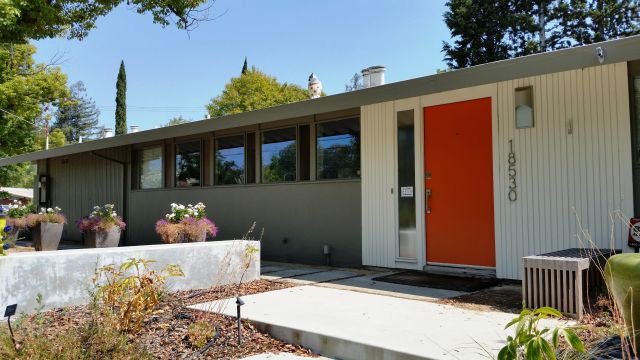 |
|
|
There’s a real joy in discovering a forgotten mid-century modern neighborhood, admiring its historic aspects and learning about its foundations. It’s even better to see how these homes and neighborhoods function so well today – even for people who don’t arrive as mid-century modern mavens.
A good example can be seen in Peremont, a little-known-to-the-outside-world enclave of 36 mid-century modern homes arrayed on low, hilly terrain in Saratoga. The homes, built in 1954 and 1955 by Perego-Montgomery Development to designs by Eichler’s original architects, Anshen and Allen, are still attracting buyers today.
And not because they are historic, but because they are livable, relaxing – and good for one’s health.
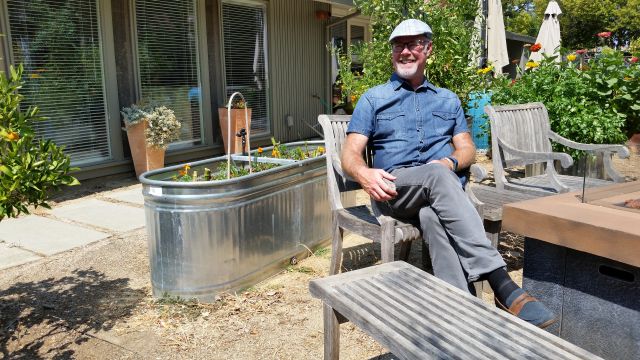 |
|
|
Tom Eddy has become among the homes’ biggest fans since he and his partner Rob Huebschmann arrived six years ago. He’s gone so far as to delve into the heritage of the homes, which were built to plans purchased from another developer, Elmer Gavello, who built homes in the South Bay and on the Peninsula.
“I’ve become a believer,” Eddy says. And, he adds, “I don’t think I could go back to a traditional house.”
Tom has visited some of the Gavello homes to compare and contrast and to find “subtle differences. The ceilings in the Peremont homes are different. These are old growth redwood beams with panels in between. The Gavellos are more traditional with tongue and groove [ceilings].”
Eddy’s home retains many of its original features, some that have been lost in his neighbors' homes, including the original outdoor entry paving, and distinctive window boxes in the kitchen ideal for displaying flowering plants or knick knacks.
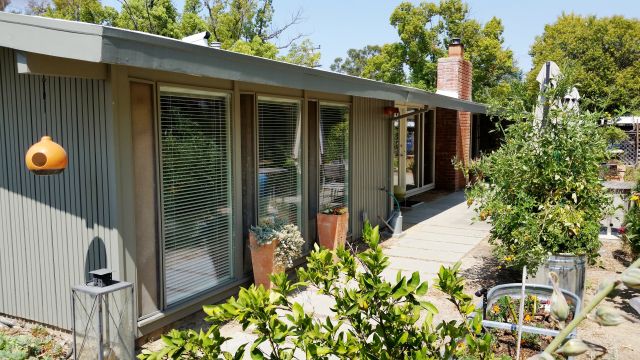 |
|
|
They have made some changes to the house as well – including installing a petanque court out front. Like bocce, this is a European game – in this case, from France – that is conducive to neighbors gathering in the evening with glasses of wine.
That is likely to happen on Montpere Way – once the compacted gravel finishes compacting, Tom says. It takes a while, as natural processes do.
Tom is a landscape architect. He grew up in Palo Alto, and worked in landscape architecture in Sonoma for a variety of clients. His basic thrust was more traditional than modern. In fact, he says, when he was called upon to do a modern landscape for a modern house, “It was really challenging. But I got a lot of clarity, doing those designs.”
Relocation sent Tom south, and he discovered the house on Montpere. “I was not looking for mid-century modern,” he says, noting that he grew up in a traditional home.
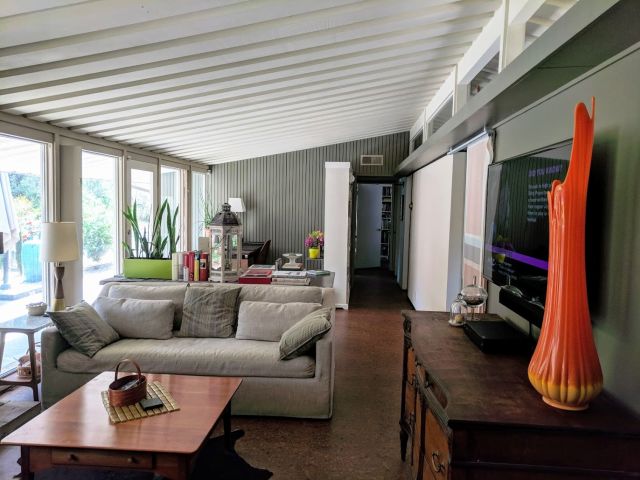 |
|
|
“I liked that it has a fairly large yard and it has distinctive architecture. I thought, let’s see what we can do with it.”
The house, which had been used for daycare and as a rental (“We still get mail for a dozen different people,” he says) was also entirely beige, from walls to carpet.
“We decided we needed to go back to its roots.”
He quickly understood how well planned his new home was.
“This house is set perfectly on its lot with the passive solar elements. When the sun is high in the summer, we get a lot of shade. In the winter we get a lot of light coming in from these windows,” he says.
He notes too that the homes are all arranged for privacy, so as not to stare at their neighbors. It helps that the site is slightly hilly.
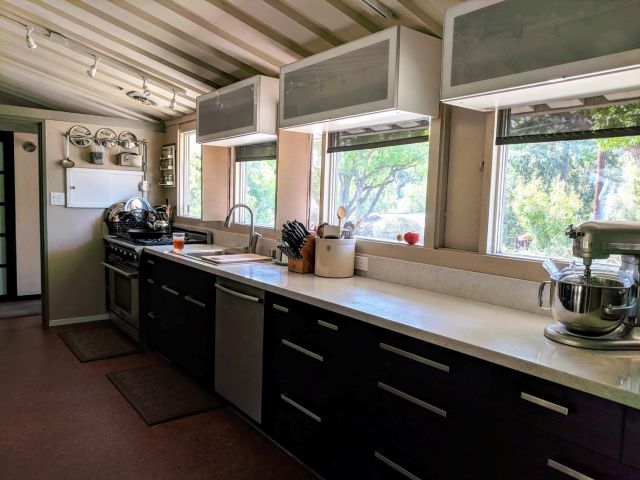 |
|
|
But what Tom didn’t notice so quickly was the way the house would affect how he feels, and his health.
It took a while for the experience of living in the house to fully sink in, especially because he was so busy working on it. The good news – there were no real problems.
He had the home inspected – twice. Rot? Nope. Termites? No. Studs and windows OK? Yes.
His response? “Come on! There’s got to be something.” The inspector replied, “There are no problems because it’s all redwood.’ ”
Still, there was work to be done, including installation of a cork floor. The original Perego-Montgomery homes had linoleum over the concrete slab. Cork was “to honor that mid-century modern aesthetic,” Eddy says.
The rear yard, which was largely concrete, Tom turned into what a friend called a “California Canyon” because of its informality.
“This is a very informal house, very modest,” Tom says. “We have a pool in the back. I feel like this house is the pool house. We are almost always barefoot.”
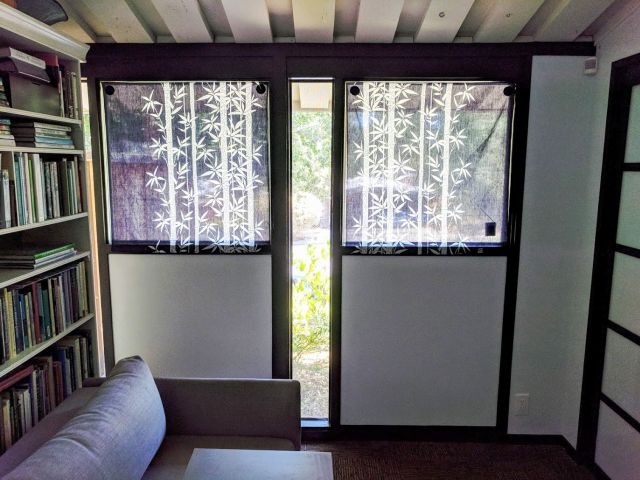 |
|
|
His friend and neighbor, Jo Rainie-Rodgers, chimes in, “You feel like you’re in a garden house.”
Tom and his partner moved here from a much larger house, didn’t have time for a garage sale, and have been reducing their possessions since.
“So we’ve been on this ‘stuff diet’ for six years,” he says. We’re finally getting there. And in the process I’ve been losing weight too. It’s a healthier way of living.”
“[The house] has helped me simplify, definitely, if not by the size of the house, certainly the aesthetic,” he adds.
Today, as Tom continues working in the home, he is moving its aesthetic in the direction of Japan – in part because he understands the influence of Asian design on Anshen and Allen’s style.
“I’m not a fan of [the home] being called a ‘Likeler,’” Tom says, citing the term often used to suggest that Eichler-like houses are mere copies of "real" Eichlers.
Jo had apparently never heard the term. “People do that?!” she said.
- ‹ previous
- 305 of 677
- next ›



